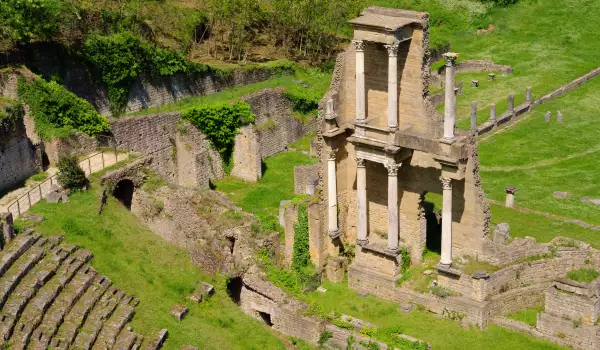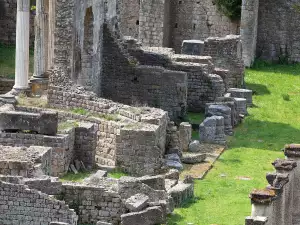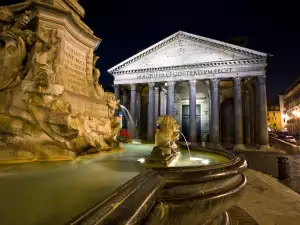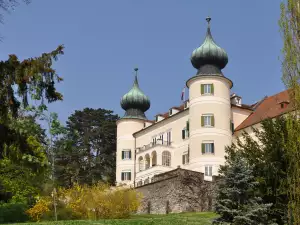Roman Theatre Volterra

Roman Theatre Volterra (Volterra Theater) is an important legacy of the Roman era, which is located near the town, to the west coast of Italy in the Tuscan region. The ancient complex comprises both the Roman Theatre and the Acropolis, Etruscan tombs and Roman baths.
Construction of the Roman Theatre Volterra started in the first century BC, when wealthy family Caecina decided to bury the hatchet and be reconciled with imperial power, by dedicating this monument to August.
The Roman theater is easily reachable from Port San Francesco in the town Volterra. The route is in the eponymous road Via Volterrana and after 100 meters turn right onto Viale Francesco Ferrucci, whose ruins stand along the north wall of the city. The Roman Theatre is located here. It was discovered in 1951 after many archaeological digs.
Just below the medieval wall, begins Roman Theatre Volterra. Below it lies a large terrace with three arched niches and two pillars. This terrace serves as an entrance to the annular shape called "criptoporticus", which is built on the highest part of the structure. These are the stands where once stood the audience.
Today they are not in very good condition, under the central part of the Roman Theatre and the lower levels. Steps, known as "itenera scalaria", leading to the stands are made of Montecatini stone, the same of which is sculptured the Etruscan gate.

The basics of the Roman Theatre in Volterra is the scene that represents a semicircle, which was once lined with marble. Two lanes lead to the stage where they shake the ancient actors. The front of the stage is adorned with columns on two levels, made of marble. Three doors open onto the stage from the wings, which have served as dressing rooms. One of them is still preserved.
The curtains on the stage rolled on a brilliant for the time technology. Like the telescope curtains glide in a narrow channel, located in front of the wooden stage.
Behind the theater are the Roman baths, built in the 4th century. At that time, probably Roman Theatre Volterra had already been abandoned. Lobby can still see the ruins of hot tubs. At the far right corner is located an oval room that serves as a steam bath or sauna.
In the Middle Ages the Roman Theatre Volterra and bathrooms had been neglected and even used as a dump. Today it is possible to enjoy this ancient monument due to the archeologist Enrico Fiumi, who began excavations here in the middle of last century.















